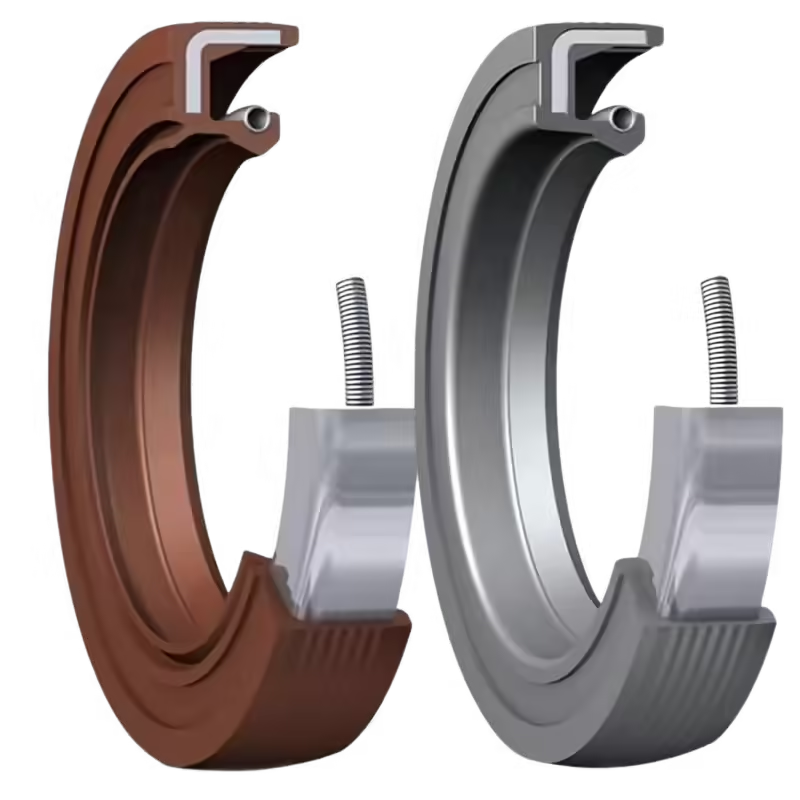What Type of Rubber Seal Material Should We Choose for High-Temperature Environments?
Introduction
Rubber seals play a crucial role in a multitude of industries by ensuring the integrity and efficiency of various mechanical systems. From automotive engines to aerospace components, the right rubber seal can prevent leaks, maintain pressure, and ensure smooth operation. However, selecting the appropriate rubber material becomes especially critical in high-temperature environments. High temperatures can lead to challenges such as material degradation, deformation, and loss of elasticity, which compromise the seal’s performance and longevity. This article explores the factors to consider when choosing rubber seal materials for high-temperature applications and reviews the most common materials used in such demanding conditions.
Factors to Consider When Choosing Rubber Seal Materials for High-Temperature Environments
- Temperature Range
- Operational Requirements: Determine the operational temperature range your seal will encounter, including the maximum exposure temperature. Ensuring the material can withstand these temperatures without degrading is paramount.
- Chemical Resistance
- Environmental Chemicals: Assess the types of chemicals the seal will be exposed to. The chosen material must resist degradation from acids, bases, oils, fuels, and other relevant substances to maintain integrity.
- Mechanical Properties
- Strength and Flexibility: The seal material must possess adequate strength to withstand mechanical stresses while maintaining flexibility and elasticity to ensure a tight seal.
- Compression Set
- Shape Retention: The ability of the material to return to its original shape after being compressed is essential for maintaining seal effectiveness over time.
- Thermal Stability
- Oxidation Resistance: The material should resist oxidation and other forms of thermal degradation to ensure prolonged performance under high temperatures.
- Environmental Conditions
- Additional Factors: Consider exposure to UV light, moisture, extreme pressures, and other environmental factors that may affect the seal’s longevity and performance.
Common Rubber Seal Materials for High-Temperature Environments
| Material | Temp Range | Properties | Applications | Pros | Cons |
|---|---|---|---|---|---|
| Viton (FKM) | ≤250°C (482°F) | Excellent chemical & temp stability | Automotive, Aerospace, Chemical | High resistance to oils & acids | Expensive, poor low-temp performance |
| Silicone (VMQ) | ≤230°C (446°F) | Superior flexibility, weather-resistant | Medical, Food Processing, Automotive | Flexible in extreme temps | Poor oil and fuel resistance |
| EPDM | ≤150°C (302°F) | Good ozone, weather, steam resistance | Automotive, HVAC, Water Seals | Excellent for water/steam | Not oil/fuel resistant |
| Fluorosilicone | ≤200°C (392°F) | Combines silicone flexibility & FKM chem. resistance | Aerospace, Automotive, Chemical | Good chemical/fuel resistance | Higher cost, limited temp range |
| Nitrile (Buna-N) | ≤120°C (248°F) | Good oil and fuel resistance | Automotive, Industrial Machinery | Excellent for petroleum fluids | Limited high-temp & ozone resistance |
| Polyurethane | ≤110°C (230°F) | High abrasion, good mechanical properties | Hydraulic Seals, Industrial Mach. | High tensile & tear resistance | Susceptible to oxidation & ozone |
| FFKM (Perfluoroelastomer) | ≤350°C (662°F) | Exceptional high-temp & chemical resistance | Aerospace, Semiconductor, High-Tech | Outstanding heat & chemical resistance | Expensive, difficult to process |
How to Choose the Right Rubber Seal for Your Application
- Assess Operational Conditions
- Understand Exposure: Identify the specific temperature and environmental conditions your seals will face to ensure the selected material can endure these factors.
- Match Properties to Requirements
- Comprehensive Evaluation: Choose a rubber that not only withstands the necessary temperatures but also meets chemical, mechanical, and environmental demands specific to your application.
- Testing and Validation
- Real-World Testing: It is essential to test rubber seals under actual operating conditions to verify performance and reliability before full-scale implementation.
- Cost vs. Performance
- Balanced Decision: Evaluate the cost of high-performance materials like Viton against the performance requirements and budget constraints of your application to make an informed choice.
Related Searches and Answers
What is the best seal material for high temperature?
The optimal seal material for high temperatures depends on the specific application requirements. FFKM (Perfluoroelastomer) is considered the premier material for extremely high temperatures, withstanding up to 350°C (662°F) and offering unparalleled resistance to chemicals, oils, and solvents. However, it is more expensive and challenging to process. Viton (FKM) is often preferred for temperatures up to 250°C (482°F) due to its excellent chemical resistance and durability, while Silicone (VMQ) is better suited for applications requiring flexibility and sealing against water or steam.
Which material should be used for high-temperature valves?
For high-temperature valve applications, FFKM (Perfluoroelastomer) is often the best choice, offering unmatched resistance to both heat and aggressive chemicals, ensuring a long service life in critical applications such as aerospace, semiconductor, and chemical processing. Viton (FKM) is also a reliable option, especially in applications involving fuels, oils, and acids, while Fluorosilicone provides a good balance for fuel-resistant applications with moderate temperature demands (up to 200°C).
For more information about FFKM, please refer to the text below
Conclusion
Selecting the appropriate rubber seal material for high-temperature applications is crucial for ensuring seal longevity and optimal performance. FFKM (Perfluoroelastomer) stands out as the most advanced material for extremely high temperatures and demanding chemical environments. It is essential to consider factors such as temperature range, chemical resistance, mechanical properties, compression set, thermal stability, and environmental conditions when making your selection. Balancing cost with performance needs and conducting thorough testing can lead to the best choice for your specific application. Consulting with experts or suppliers can provide valuable insights tailored to your industry requirements.
Contact Information
For more information, please visit our website at drorubber.com
WhatsApp: +0086 15815831911
WeChat: +0086 13784044874





